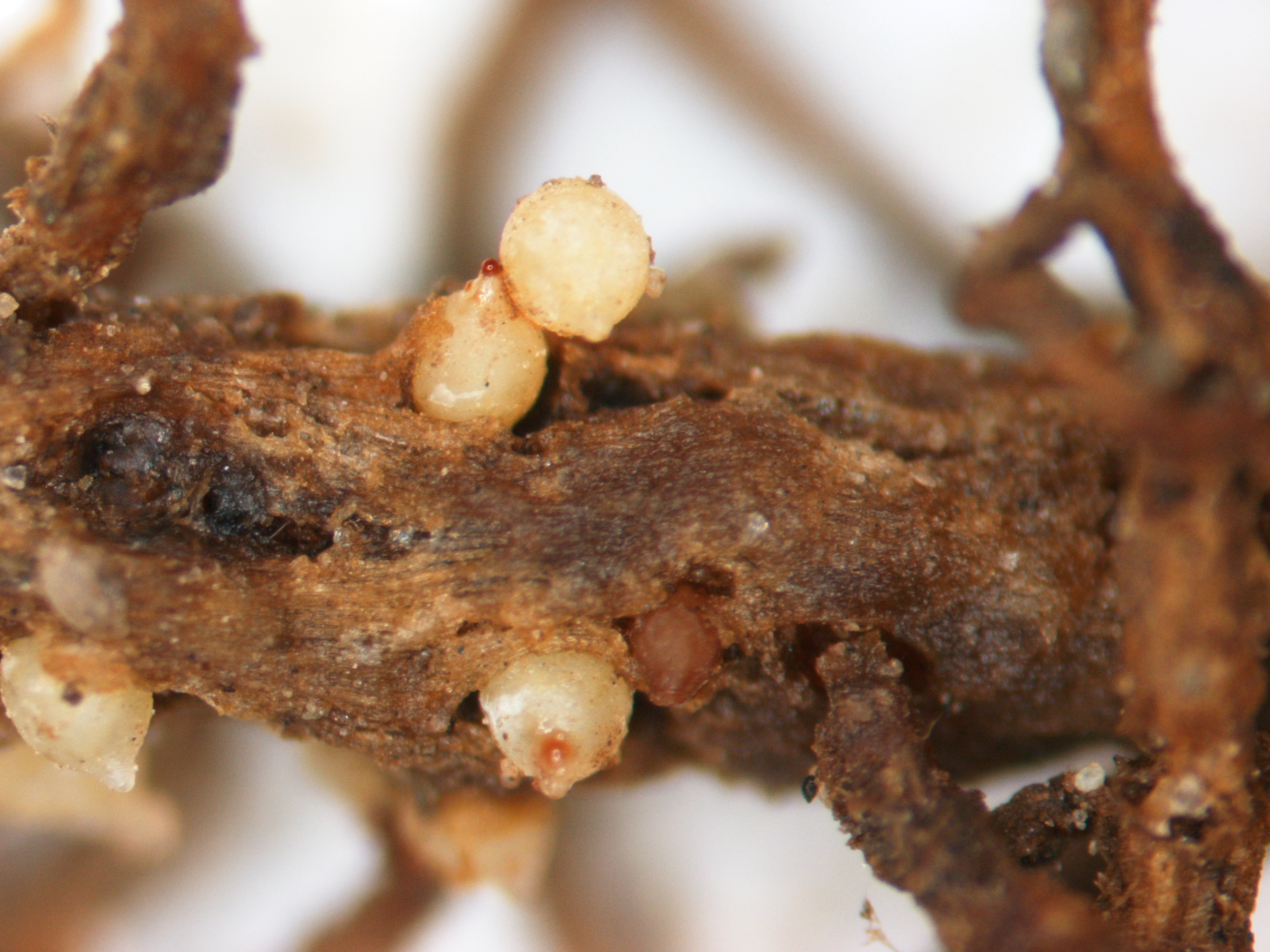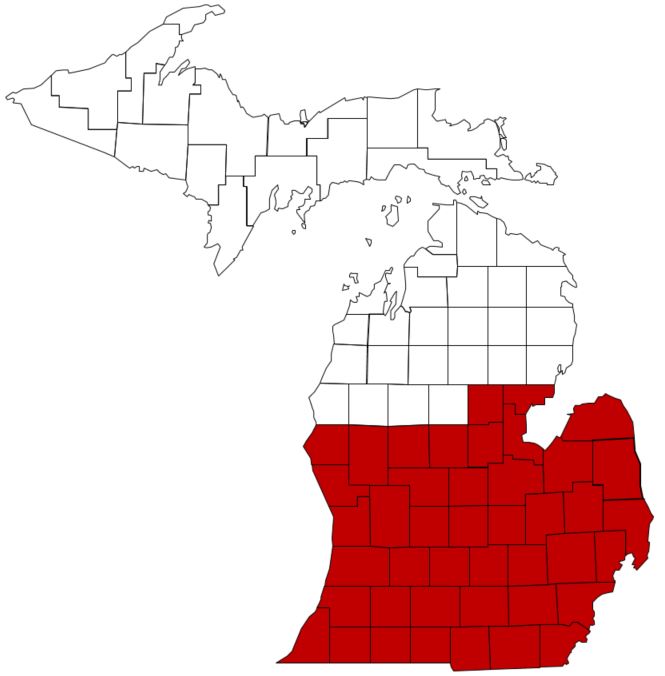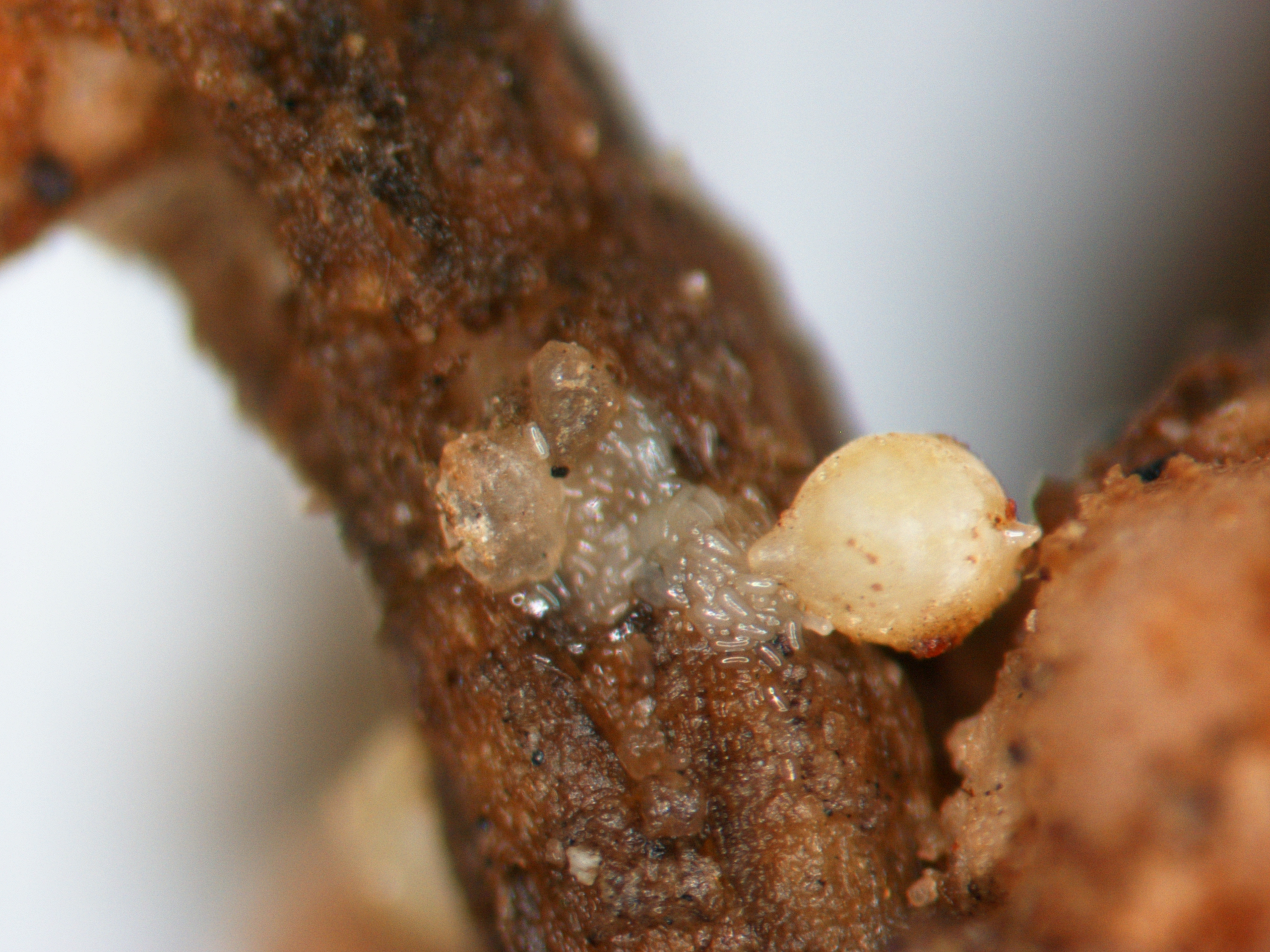Soybean cyst nematode resistance management
Soybean cyst nematode is a highly destructive soybean pathogen. Learn more about soybean cyst nematode, its impact on the soybean industry and management recommendations.

Soybean cyst nematode is recognized as a key limiting factor in Michigan soybean production and local nematode populations are becoming highly aggressive. As a result, a national Soybean Cyst Nematode Resistance Management Coalition has been launched to provide information about resistance management. The Coalition consists of more than 30 agribusiness, grower organization and state partners.
Quick summary on soybean cyst nematode, its impact on the soybean industry and management recommendations
Soybean cyst nematode is the most destructive soybean pathogen. Soybean cyst nematode (Heterodera glycines) is a sedentary endoparasite that was first detected in Michigan in 1987 and has since spread. Soybean cyst nematode is known to exist in soybean producing counties south of Clare. More soybeans are being grown in our northern counties, so growers in northern Michigan should monitor their fields closely.
Counties with confirmed soybean cyst nematode presence. Map provided by Angie Tenney, MSU.
Soybean cyst nematode is easier to manage if detected early. This pest often causes yield reductions of 5-30 percent and can cause up to 80 percent yield loss if susceptible varieties are planted in a highly infested field. Soybean cyst nematode reduces the number of pods per plant, the number of beans per pod and is responsible for approximately $40 million in yield losses each year.
Once soybean cyst nematode has infected a field, juvenile soybean cyst nematode will seek out and penetrate soybean roots, causing a feeding site to develop. Females will continue to feed from this site until adulthood and will release eggs in a jelly-like substance during this time. When the female dies, her body becomes a lemon-shaped protective case (cyst) for her eggs. This cyst can remain in the soil up to 10 years until a host stimulates the release of juveniles from the eggs within. A single female can produce as many as 200 eggs per cyst. The lifecycle of soybean cyst nematode can be completed in as little as 30 days, allowing for multiple generations per growing season.

Soybean roots with soybean cyst nematode females (the white, round objects coming out of the roots). Photos by Angela Tenney, MSU.
Above-ground symptoms such as stunted and yellowed plants are not unique to soybean cyst nematode and are often overlooked or attributed to other causes, such as nutrient deficiencies. Soybean cyst nematode is usually not evenly distributed in the soil, which can further impede detection. The most accurate way to diagnose an infestation is through identifying juveniles and cysts from a soil or root sample. The Michigan Soybean Promotion Committee provides support for growers to submit samples for identification. Submit samples to Michigan State University Diagnostics Services.
In addition to regular soil testing, management practices that are typically recommended for soybean cyst nematode-infested fields include planting resistant varieties, rotating sources of resistance, rotating with non-host crops, controlling weeds and maintaining clean farm equipment to avoid further spread; however, there are limitations to these strategies. Research suggests that soybean cyst nematode is now able to reproduce on resistant varieties due to the extensive use of the PI88788 source of resistance. Rotate sources of resistance and keep soybean cyst nematode numbers low in the field in order to maintain effectiveness of our currently used resistant varieties. Crops in rotation with soybeans must be carefully chosen to ensure they are not also hosts of soybean cyst nematode. Because of this, avoid other legumes such as hairy vetch, field pea, red clover, etc. Certain weed species can also be hosts of soybean cyst nematode, so weed management programs should be implemented. See “Winter Annual Weeds and Soybean Cyst Nematode Management” by Purdue University Extension for more information, or watch the YouTube video below by the Soybean Cyst Nematode Coaltiion.
The national Soybean Cyst Nematode Resistance Management Coalition has been launched to provide information about resistance management and more information regarding soybean cyst nematode resistance management can be found at the Soybean Cyst Nematode Coalition website. The MSU Applied Nematology Lab is currently evaluating best management practices for soybean cyst nematode and collaborating with the national Soybean Cyst Nematode Coalition.



 Print
Print Email
Email

